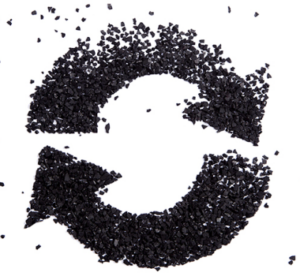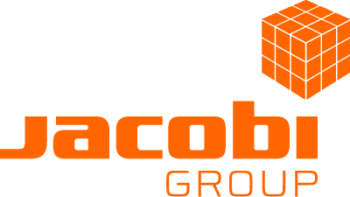
RECYCLING & ENERGY RECOVERY SOLUTIONS
Our facilities are located in:
– Jacobi Carbons Services (Europe) GmbH, Premnitz, Germany
– Jacobi Carbons SASU, Vierzon, France
With over 12,000 MT of annual capacity, including the ability to perform custom reactivation for potable, food and industrial grade spent carbons, the Jacobi Carbons reactivation plants provide an effective option to media replacement.
SUMMARY
- Recycling, Energy Recovery or Disposal Services
- Spent Carbon Recycling Services
- Solutions with Energy Recovery
- Disposal Services
Recycling, Energy Recovery or Disposal Services
The Jacobi adsorbents are used in a wide range of applications. Adsorbents generally have a limited lifetime and need to be replaced once they are saturated or the treatment objective is reached. Jacobi Services offers several recycling, energy recovery or disposal services in different facilities, depending on the properties of the spent material.
Spent Carbon Recycling Services
Spent granular (GAC) or pelletised extruded (EAC) activated carbon can be recycled by thermal reactivation, which involves processing the spent carbon through a high temperature reactivation furnace at or above 850°C. Recycling by thermal regeneration is just one of the steps in the complete service package. This recycling process comprises two main processes: 1) The reactivation process. 2) Off gas treatment and energy recovery process.
The reactivation process itself can be subdivided in four steps:
1) Drying of the used carbon
The spent carbon is fed into the furnace and heated up from ambient to 105 – 110°C. Water and some low boiling compounds are evapourated and released into the furnace atmosphere. The temperature of the carbon remains between 105 and 110°C as long as there is still water in the pores.
2) Desorption of the organics with a low boiling point.
The temperature will rise further to approximately 450°C when the carbon is dry. Various organic compounds will desorb from the carbon and escape into the furnace atmosphere during this temperature increase.
3) Pyrolysis of the strongly adsorbed organics with high boiling point or high molecular weight
The carbon is further heated in this step to about 600°C. The remaining organics will decompose into smaller molecules that are released in the furnace atmosphere and form a char residue in the pore structure of the activated carbon.
4) Gasification of the char residue
The pore structure in the carbon is reformed by heating the carbon to temperatures over 850°C and injecting steam. Steam at temperatures above 600°C will, endothermic oxidise the carbon, the so-called steam carbon gasification reaction. The following reaction will occur in this zone of the furnace:
Solid-gas reactions
C + H₂O → CO + H₂ Endothermic (1)
C + CO₂ → 2 CO Endothermic (2)
C + ½ O₂ → CO Exothermic (3)
C + O₂ → CO₂ Exothermic (4)
Gas-gas reactions
CO + ½ O₂ → CO₂ Exothermic (5)
H₂ + ½ O₂ → H₂O Exothermic (6)
The solid gas reaction (1) is three times faster the solid-gas reaction (2). For this reason, steam is injected in the furnace. The pore structure will be recovered to optimum activation levels necessary for the application in which the product is used by controlling the operating conditions of the furnace.
The resulting gases leaving the furnaces are fed through an afterburner and an off-gas treatment system to allow emission to atmosphere in accordance with the most stringent local environmental regulations. Recycling by thermal reactivation is an environmentally responsible disposal method that helps to reduce CO₂ emissions over the activated carbon and contributes to a sustainable use of the world’s resources.
The reactivation process helps to reduce CO₂ emissions and to use the world’s resources sustainably. As an environmentally responsible company, Jacobi Carbons operates modern activated carbon reactivation plants in Europe that regenerate spent activated carbon. Our plants in Europe are strategically located to serve the Western and Eastern European activated carbon users to minimise transportation costs and time.

Solutions with Energy Recovery
Used or spent activated carbon and other media with calorific content that cannot be recycled by thermal reactivation can be used in cement kilns or incinerator plants for energy recovery. Jacobi Carbons can assist in the development of an ecologically sensitive, yet cost effective, method of managing the end-of-life processing of the media.
Disposal Services
In a limited number of exceptional cases it is not possible to undertake reactivation or energy recovery due to the condition or characteristics of the spent adsorbent. This may be as a result of the chemicals adsorbed or entrained by the adsorbent, the adsorbent itself (for example, the impregnation chemicals used) or as a result of the accumulation of other substances present in the water or gas being treated (such as aluminium, arsenic, calcium, mercury, sulphur or other toxic compounds).
In these cases, Jacobi Services provide alternative solutions. We conduct a full assessment of the material and consign it to an appropriate waste management facility, in line with regional and national regulations. These partners will use the spent carbon either as a waste derived fuel (WDF) for the processing of minerals, or manage the material to a destruction facility. In this case, often the heat produced is used to generate steam or electricity for district heating and power companies respectively.
Jacobi Services can also provide proper elimination services in the rare cases where spent material cannot be reactivated or energy cannot be recovered from it.
GET IN TOUCH
Fill out the short form below and our team will be in touch.
*indicates a mandatory field.

